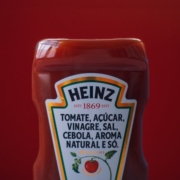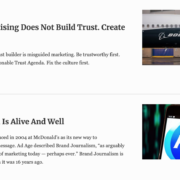Netflix Finally Stops Believing What Worked Yesterday Will Work Today
There is a brand-business truism that states: Believing That What Worked Yesterday Will Work Today is Brand-Business Destructive. At some point, top executives and Boards of Directors need to face the music in a changing brand-business landscape. They need to stop doing what worked in the past. Problems arise when the strategic plan is to keep on keeping on with the same approach.
By now, readers of the business pages and business press will know that Netflix reported a significant loss of subscribers in their latest analyst call and, hence, experienced a significant drop in market value. Observers have been quick to comment on Netflix’ CEO Reed Hastings’ remarks regarding his thoughts on fixing Netflix. Financial Times called Mr. Hasting’s remarks a “humbling volte-face.” Reporters sounded almost gleeful when indicating that when facing this loss of subscriber growth, it took no time at all for the brand to “jettison long-cherished principles.”
Mr. Hastings was criticized for indicating that he was now planning to do things that he had previously said he would never do. These include ending password sharing, admitting there is excellent competition with which to deal, curbing massive content spending and allowing advertising. One analyst was unfortunately harsh saying that listening to Mr. Hastings was “… shocking.” The analyst followed by saying that the Netflix management team “… sounded like any other management team that just didn’t have the answers.”
This sort of criticism is brand defeating. It seems that every envious soul is kicking Netflix while the brand is down. In fact, according to The Hollywood Reporter, there is an entire town (Los Angeles) that is “rooting against” Netflix.
This unfortunate sniping shows an incredible lack of intelligence about brand-building. It is quite clear in brand-business management that continuing to do what worked in the past when the present is different is a tendency for trouble. Recognizing that things must change; recognizing that “cherished behaviors” may no longer be feasible is necessary for any brand. Mr. Hastings should be given some positive reinforcement for immediately telling us that it is time for the Netflix brand to respond and market differently. Better late than never.
Customers change; the world changes; brand reputations change; and competition changes. Doing what once worked when the current landscape is different makes no sense. Thinking that what worked yesterday will work today is inward looking. When focusing on past, successful strategies, a brand misses what is happening now and what can happen tomorrow.
Mr. Hastings and his Netflix executives may be late to the recognition that things have to change, but at least they are planning for implementation now. Netflix is a pioneer; a category creator and definer. Netflix single-handedly disrupted the entertainment category affecting how, where and why people viewed content. The Netflix brand changed the game for television viewing, movie theaters and for Hollywood. Netflix was the leader. Netflix was the brand that all the other streaming brands emulated and, in some ways, copied. When the brand was growing, creating a new category of viewing content, Netflix followed certain strategies. The Netflix brand continued to implement these strategies even though, over the course of years, the viewing landscape was changing under its feet. As one ex-Netflix executive said, “There was never any fear that we’re in trouble. The feeling was we are leap years ahead.”
According to online TheStreet.com, Netflix lost customers because of two issues: available content and its catalog. On the one hand, Netflix suffered because other streaming services – following Netflix’ model – have been able to generate “buzzworthy” content at or above Netflix’s quality. Disney+ and Apple+ have seriously desirable content available. On the other hand, Netflix’s access to content was cut-off when the movie studios and TV networks started their own streaming services. Shows such as Friends or The Office returned to their original owners’ services, leaving Netflix with major gaps. Netflix underestimated the power of its follower brands and overestimated its power as a pioneer.
The Hollywood Reporter adds a third content-related problem: jettisoning the creative mind behind the expensive but extraordinary shows House of Cards, Stranger Things and Orange Is The New Black. Instead, Netflix focsued on “… less expensive, less curated, less compelling…” content that began “The Walmartization” of Netflix. Netflix, certain that quantity of original content was the answer, generated “a burgeoning number of shows” that lacked “quality control and curation.”
In other words, The Hollywood Reporter indicated that the Netflix approach of massive content generation became a “binge strategy” – make all these shows and they will come. And, as Jeff Sommer for The New York Times points out, Netflix cannot continue to just throw money at its problems.
But, all things, even bad ones, come to an end. As one rival executive said, “I don’t think Netflix is Blockbuster. I think it’s here to stay. But, the idea that they could spend their way to world domination is over.”
The renowned marketing guru, Peter Drucker, was a proponent of stopping what worked in the past. Mr. Drucker recognized the pitfalls into which so many great brands fall when it came to doing the same thing over and over. His lessons included these three key elements:
- Environments change. Continuing strategies and actions that created past successes will eventually lead to failure.
- Being defensive and unyielding will also lead to failure. Organizations must be willing to (quickly) abandon formerly successful approaches.
- Believe that change will happen and that sometimes the change will be revolutionary. Enterprises should create the future by making changes even though it means “obsolescing the products or methods of its current and past success.”
This is common sense. Standing still while changes rage around you is a formula for failure. Markets and customers change quickly. So, companies must be flexible, agile and quickly decisive. It is also important to have a leader who is willing to look outward rather than backward.
Building a brand that is not afraid of letting go is critical. This means being ready to take or regain leadership in a fast-moving, changing world. Staying alive and growing hinges on how willing the brand’s top executives are to recognize when it is time to move on and jettison a strategy that is holding the brand back. Brands can live forever but only if properly managed. This means recognizing when it is time to innovate to breathe new life into a brand.
Netflix is telling us that some things will need to change. The brand is suggesting that many of its previous strategies are no longer helping the brand to grow. The Netflix brand-business model will undergo alterations. Some of the more reasonable observers are questioning whether cutting funds for content and having advertising are actually the panaceas that Netflix needs.
In the interim, it is refreshing, no matter how fraught and messy the situation is, to see a brand-business leader say that things will need to change if the brand is to survive.





